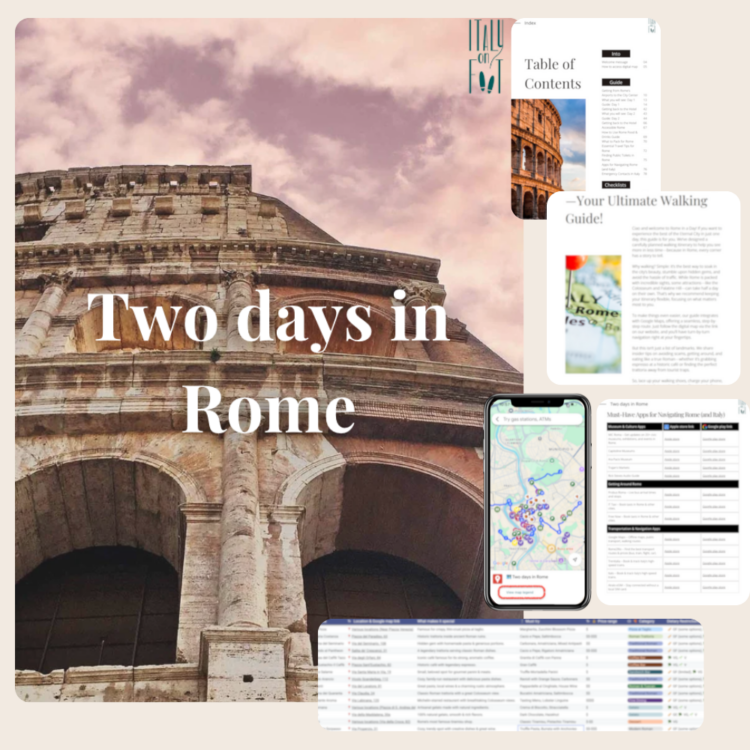The soul of Italy is etched in its historic cities, breathtaking landscapes, and monumental landmarks. A land where history whispers from every corner, art flourishes, and culinary traditions bring people together, Italy is a country that feels like home, regardless of where you’re from. For those looking to venture through this magnificent country, a visit to these eight famous landmarks is akin to stepping into the pages of a living history book. And if you’re wondering how to tread this beautiful Italian journey, consider visiting ItalyOnFoot for an immersive experience.
1. The Colosseum: Echoes of Ancient Rome
Imagine the ground trembling under the roar of the crowd, gladiators in fierce combat, and emperors presiding over the grand spectacle. The Colosseum, standing as a monumental testament to Roman engineering and architecture, brings these vivid images to life. This ancient amphitheater, once capable of hosting up to 80,000 spectators, speaks volumes of the Roman Empire’s grandeur and its societal customs. Visiting the Colosseum, you’ll not just walk through an iconic landmark; you’ll traverse through the echoes of a civilization that shaped the Western world.
2. The Canals of Venice: A Floating Masterpiece
Venice, a city of dreams, defies conventional urban planning and thrives on its uniqueness. The canals of Venice, lined with Gothic and Renaissance palaces, serve as the roadways of this aquatic city. A gondola ride through these waterways is not just a tourist activity; it’s a passage through time, showcasing the intricate relationship between the Venetians and their aquatic environment. The serenity of the Grand Canal, complemented by the architectural marvels on its banks, encapsulates the romantic essence of Italy.
3. The Leaning Tower of Pisa: A Beautiful Imperfection
In the heart of Tuscany lies a structure famously known for its unintended tilt – the Leaning Tower of Pisa. This architectural anomaly has captivated the curiosity of visitors for centuries. Originally intended as a freestanding bell tower for the adjacent cathedral, its infamous lean began during construction, due to inadequate foundation on soft ground. Today, the Leaning Tower stands as a symbol of resilience and the enduring appeal of Italian architectural prowess. It serves as a poignant reminder that beauty often lies in imperfection.
4. Florence’s Cathedral: A Renaissance Jewel
Florence, the cradle of the Renaissance, houses some of the most magnificent works of art and architecture in the world, and the Cathedral of Santa Maria del Fiore stands as its crown jewel. With its iconic red dome engineered by Filippo Brunelleschi, the cathedral represents a milestone in architectural achievement. The façade, adorned with marble panels in shades of green, pink, and white, along with the breathtaking frescoes inside, reflect the splendor and spirit of the Renaissance era. A visit here is a pilgrimage for admirers of art and architectural innovation.
5. The Ruins of Pompeii: A Glimpse into Antiquity
The ancient city of Pompeii offers a haunting yet fascinating look at Roman life, frozen in time by the catastrophic eruption of Mount Vesuvius in 79 A.D. Walking through the well-preserved streets, homes, and public spaces, one can vividly imagine the daily routines of its inhabitants before the disaster. The ruins serve as a powerful reminder of nature’s might and the fleeting nature of civilization. Pompeii is not just an archaeological site; it’s a poignant window into the ancient world.
6. The Sistine Chapel: Michelangelo’s Masterpiece
Nestled within the Vatican City, the Sistine Chapel is hailed as a pinnacle of Renaissance art, primarily for the awe-inspiring frescoes painted by Michelangelo. The ceiling, featuring the iconic ‘Creation of Adam,’ and the altar wall with ‘The Last Judgment,’ reflect the genius of Michelangelo and the peak of artistic achievement in the Renaissance. The chapel is also the site of the Papal conclave, adding a layer of ecclesiastical significance to its artistic marvels. Visiting the Sistine Chapel offers a transcendental experience, connecting visitors with the divine through art.
7. The Roman Forum: Heart of the Ancient City
The Roman Forum, once the nucleus of public life in ancient Rome, offers an unparalleled glimpse into the past, where politics, religion, and society intertwined. Strolling through the remnants of temples, arches, and government buildings, visitors can piece together the grandeur of ancient Rome. This sprawling complex, more than any other site, encapsulates the essence of Roman civilization and its enduring influence on the modern world.
8. Cinque Terre: A Picturesque Coastal Marvel
Cinque Terre, a string of five centuries-old seaside villages on the rugged Italian Riviera coastline, represents the harmonious relationship between man and nature. With their colorful houses and vineyards clinging to steep terraces, these villages offer stunning views of the Mediterranean Sea. The Sentiero Azzurro cliffside hiking trail connects the villages and provides a unique way to experience the natural beauty and cultural charm of this UNESCO World Heritage site.
Italy is a country that weaves the richness of history with the vibrancy of contemporary life. Visiting these eight landmarks offers a glimpse into the soul of Italy, where every stone tells a story, and every landscape inspires a dream. Whether you’re marveling at the architectural feats of ancient Romans, getting lost in the artistic masterpieces of the Renaissance, or simply enjoying the serene beauty of its coastal villages, Italy has a way of making every moment feel like a masterpiece.



